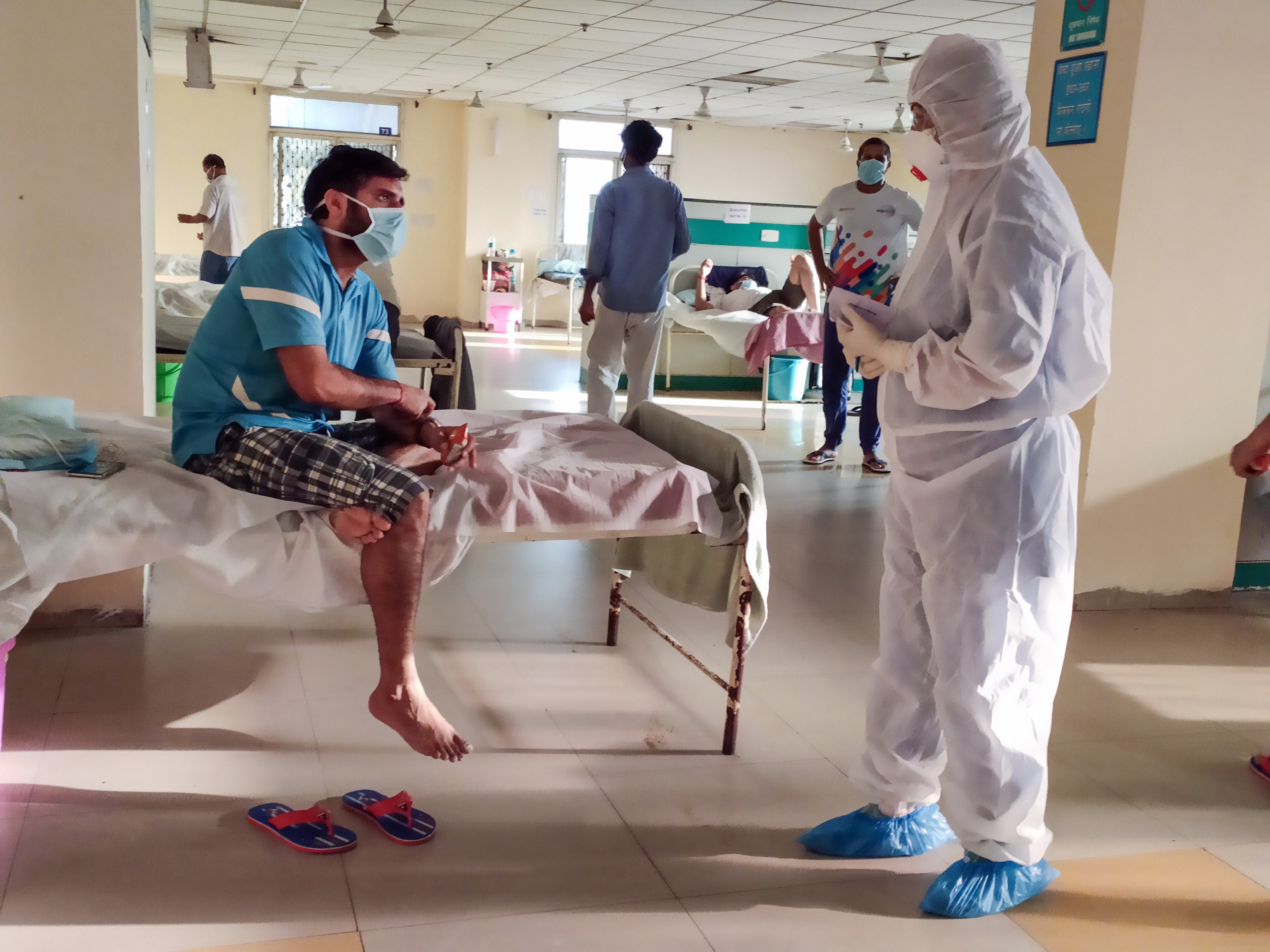India’s coronavirus epidemic remains on an exponential growth curve and not a linear curve as government officials had suggested last week, researchers and public health experts tracking the country’s rising Covid-19 counts said on Saturday.
Health authorities detected 2,411 new cases on Saturday, the first overnight spike greater than 2,000, raising the number of Covid-19 patients to 37,776. But the researchers said the epidemic curve, while still exponential, had shifted towards slower growth.
The rising counts through April now point to an effective reproduction number R of 1.27, significantly lower than the basic reproduction number, R0, of 1.83 estimated through counts in March. R is a term that indicates how many people are expected to become infected from one infected person.
An R of 1.27 implies that 100 infected people would over their infectious period infect 127 others.
“This R value represents exponential growth,” said Sitabhra Sinha, a biophysicist at the Institute of Mathematical Sciences, Chennai, who has been observing the growth curve to generate forecasts of “active” cases, or patients in hospital, for each day.
Senior government officials had last week suggested that without the lockdown, India’s current number of cases would likely have exceeded 100,000 and said the observed growth curve was now “linear”.
Public health experts say whether a growth curve is linear or exponential will determine how quickly the numbers of patients rise in the coming days and weeks.
The forecast by Sinha and his colleagues, based on an exponential growth curve, suggests that India would have around 42,000 Covid-19 patients in hospital by May 10.
If the growth curve were indeed linear, the number of patients in hospital by May 10 would be around 30,000.
“We’ll just wait and see how the numbers change in the coming days,” Sinha said.
Sinha, however, underlined that the growth curve between April 6 and April 18 had indeed displayed a linear pattern.
“How you see the curve depends on the length of the curve you observe,” Sinha said. “It’s hard to tell apart linear from exponential by looking at short period data only.”
Infectious disease experts have asserted that the lockdown would only slow down the virus transmission and buy time for the government to bolster hospital and critical-care infrastructure and for people to prepare themselves for physical distancing and other measures post-lockdown.
The growth curve in the post-lockdown weeks would hinge on the opportunities that the virus gets to jump from an infected person to a susceptible person. Health officials have said the lockdown has helped the country widen the doubling rate of its number of infections from 3 days to more than 11 days.
Experts say that as long as large sections of the population remain susceptible – not immune – the virus will continue to spread. “Doubling may continue or even accelerate after the lockdown is lifted,” said T. Jacob John, a clinical virologist and emeritus professor at the Christian Medical College, Vellore.
John and other epidemiologists have predicted that without a vaccine or drugs to treat the infection, the coronavirus will continue to spread until around 60 per cent of the population is infected -– a situation called herd immunity -– after which the spread will plummet.
“Since India has around 1.3 billion people, doubling is expected to continue for many more weeks,” John said. “From 37,000 today to 780 million (roughly 60 per cent of our population) is a factor of 21,081, or doubled 14 to 15 times.
“A doubling time of a week would mean 14 to 15 weeks, or four months – by August-end. If post-lockdown doubling time decreases, earlier – may be mid-August or early August,” he said. “But there is no guarantee such calculations are valid in real life.”











